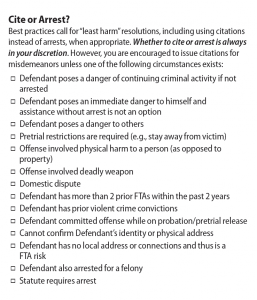In January 2020, North Carolina’s Second Judicial District (Beaufort, Hyde, Martin, Tyrrell, and Washington Counties) implemented two consensus bail reform initiatives. First, they implemented a structured decision-making tool for magistrates to use when making bail decisions. Among other things, the tool:
- creates a presumption for conditions other than a secured bond for people charged with Class 3 misdemeanors;
- provides screening factors to quickly identify individuals charged with intermediate-level cases (defined by local policy to include Class A1 – 2 misdemeanors and Class F – I felonies) who can be released on a condition other than a secured bond;
- affords those charged with Class A – E felonies no special presumptions or screening; and
- embeds within the decision-making process the statutory requirement that conditions other than a secured bond must be imposed absent a risk of non-appearance, injury to any person, or interference with the criminal proceeding.
Second, stakeholders implemented new first appearances for individuals detained on misdemeanor charges to ensure timely judicial review of bail.
These reforms were developed by a stakeholder team including judges, prosecutors, public defenders, clerks, magistrates, and law enforcement leaders. One of the team’s goals was to reduce pretrial detentions of individuals who do not pose a pretrial risk but are detained due to inability to pay bail. The UNC School of Government Criminal Justice Innovation Lab supported stakeholders in the development and implementation of reforms and, with support from local stakeholders, conducted an empirical evaluation of their implemented reforms. We recently released a final report (here) on that evaluation. This post summarizes key findings.
